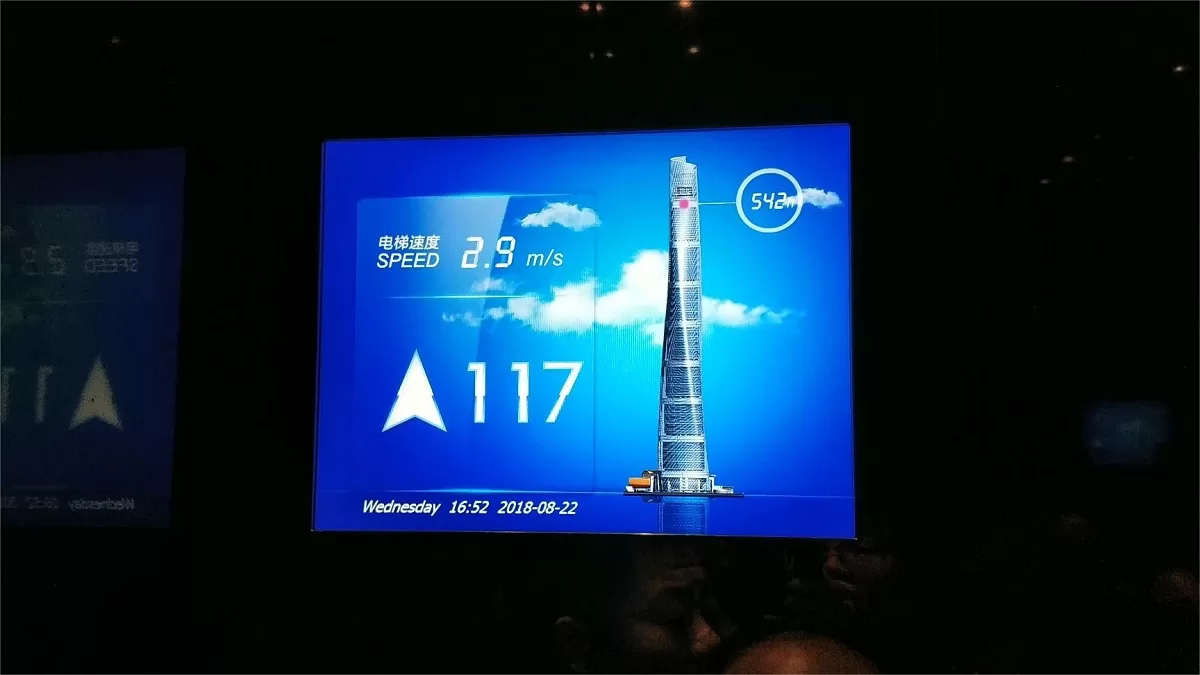Shanghai Tower, one of the world’s most iconic skyscrapers, stands tall as a testament to human innovation and engineering marvel. However, its architectural grandeur isn’t limited to its exterior; it extends deep within the structure through cutting-edge vertical transportation systems. Among these, the high-speed elevators within Shanghai Tower have redefined the boundaries of efficiency and convenience, elevating the concept of vertical mobility to unprecedented heights.
Enhanced Speed and Efficiency
The high-speed elevators in Shanghai Tower are engineering marvels that transcend conventional transportation systems. With speeds surpassing 40 miles per hour (64 kilometers per hour), these elevators effortlessly transport occupants to their desired destinations within the tower. Their unparalleled speed reduces travel time significantly, providing swift and seamless access to different floors. Passengers experience a thrilling sensation as they ascend or descend through the tower’s vertical space in mere seconds, defying the limitations of traditional elevators.
Advanced Safety Measures
Safety is paramount in any transportation system, especially in a skyscraper housing thousands of occupants. The high-speed elevators in Shanghai Tower are equipped with state-of-the-art safety features, ensuring a secure and comfortable ride for passengers. Advanced motion control systems accurately and efficiently manage the elevator’s movement, minimizing vibrations and eliminating sudden jolts.
Moreover, the elevators are equipped with multiple redundant safety mechanisms, such as emergency brakes, seismic sensors, and backup power supplies. These safety features provide passengers with peace of mind, even during unforeseen events like power outages or earthquakes. The elevator cars are constructed with sturdy materials that can withstand extreme conditions, offering robust protection to the occupants.
Intelligent Destination Control System
Efficiency is a key aspect of the high-speed elevators in Shanghai Tower. Their intelligent destination control system optimizes the flow of people within the building. Passengers input their desired floor on the control panel before boarding the elevator, and the system assigns them to the most appropriate car. This intelligent allocation reduces waiting times, minimizes crowding, and ensures smoother operations throughout the building.
The destination control system also incorporates machine learning algorithms that analyze passenger traffic patterns, peak hours, and historical data. This data-driven approach allows the system to anticipate and adapt to changing traffic conditions, further enhancing efficiency and reducing congestion within the tower.
Sustainability and Energy Efficiency
Shanghai Tower is a pioneering symbol of sustainability, and the high-speed elevators within it uphold this commitment. These elevators employ regenerative braking systems that capture and convert excess energy into electricity, which is then used to power other building functions. This innovative feature reduces energy consumption and contributes to the tower’s overall sustainability goals. By adopting eco-friendly technologies, the high-speed elevators align with Shanghai Tower’s vision of minimizing its environmental impact.
Conclusion
The high-speed elevators in Shanghai Tower represent a significant leap forward in vertical transportation technology. With their remarkable speed, advanced safety measures, intelligent destination control system, and sustainability features, they have revolutionized the way occupants traverse this architectural masterpiece. These elevators exemplify the unwavering commitment to innovation and excellence that defines Shanghai Tower’s legacy.


